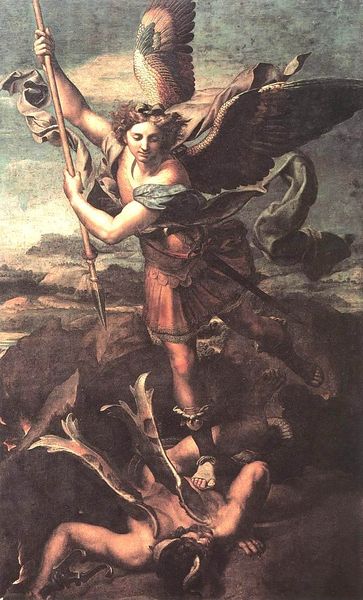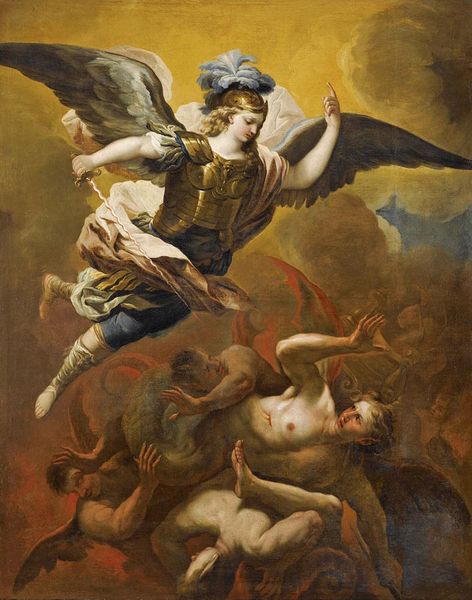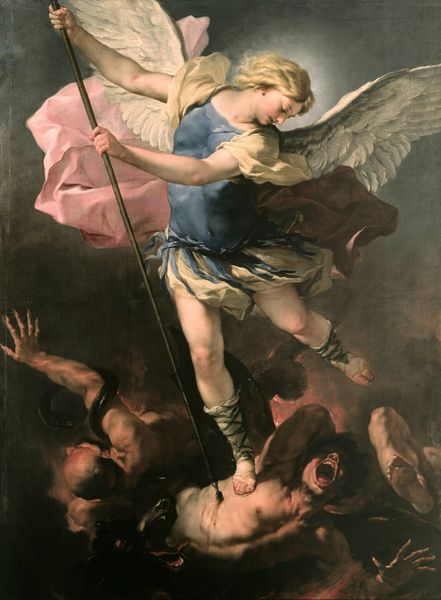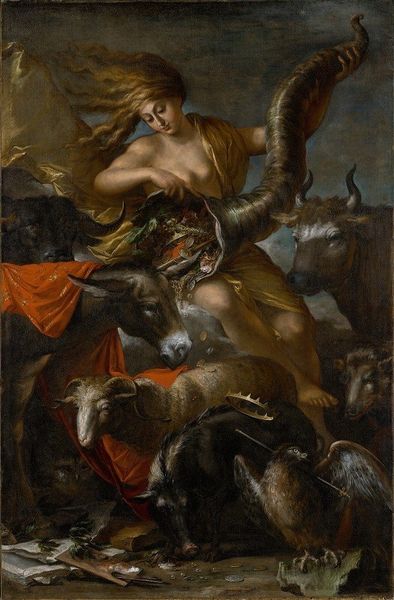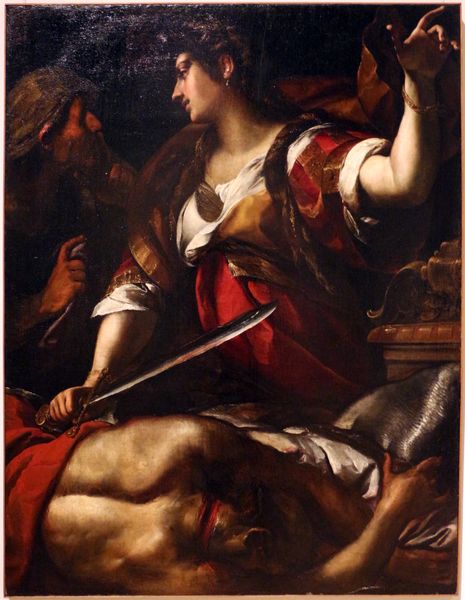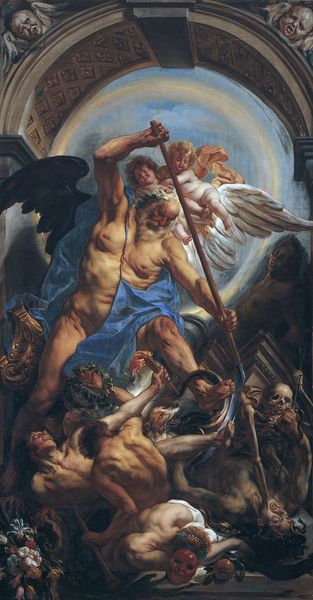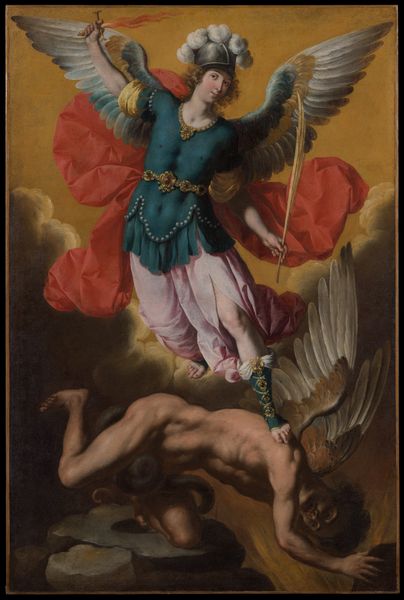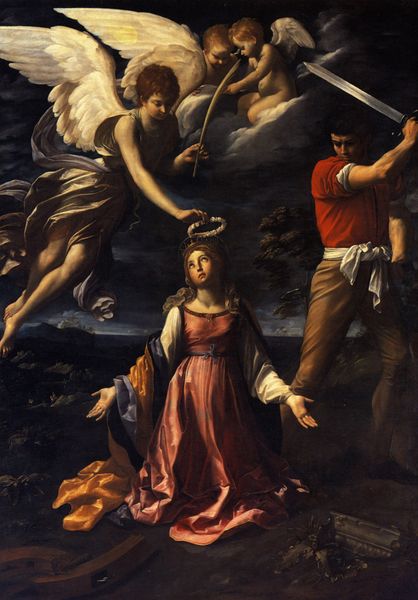
painting, oil-paint
#
portrait
#
allegory
#
painting
#
oil-paint
#
figuration
#
oil painting
#
history-painting
#
italian-renaissance
#
portrait art
Copyright: Public domain
Editor: Here we have Giulio Romano's oil on panel painting, "Saint Michael Vanquishing Satan," created around 1518. The scene is intense, full of implied movement and contrasting tones. What strikes you about the formal elements? Curator: The dynamic contrapposto of Saint Michael immediately catches the eye, doesn't it? The figure's serpentine pose creates visual tension. Observe how Romano has employed light and shadow – chiaroscuro – to model the musculature, accentuating the drama. The artist has clearly considered classical sculptures while working with oil paint. What do you think is going on in the lower part of the image? Editor: The prone figure of Satan? He seems to be composed with a lot of curves, too. I mean, it contrasts with the hard angles of St. Michael, but there is visual connection. Curator: Precisely. The circularity of the composition draws your eye from Saint Michael to Satan and back again. Consider the material qualities: the glazes of the oil paint give luminosity to Michael's skin, contrasting with the muddier tones of the defeated Satan. What structural patterns are at play here? Editor: Well, the spear held by Saint Michael forms a strong vertical axis, dividing the canvas. Also, I guess the wings of St. Michael mimic the body position of the figure below, reflecting a sort of evil/good balance? Curator: Yes, a compelling analysis. Notice how Romano uses that spear to create a directional line, further emphasizing the triumph of good. It's all meticulously constructed, isn't it? What we get from the dynamic is actually something harmonious, like a resolved discord. Editor: I see that now, the tension relies a lot on the painting techniques and color combination but delivers a message of "peace." It has been enlightening. Curator: Indeed. Attending to form allows a deeper understanding of content and of artistic talent in full expression.
Comments
No comments
Be the first to comment and join the conversation on the ultimate creative platform.
